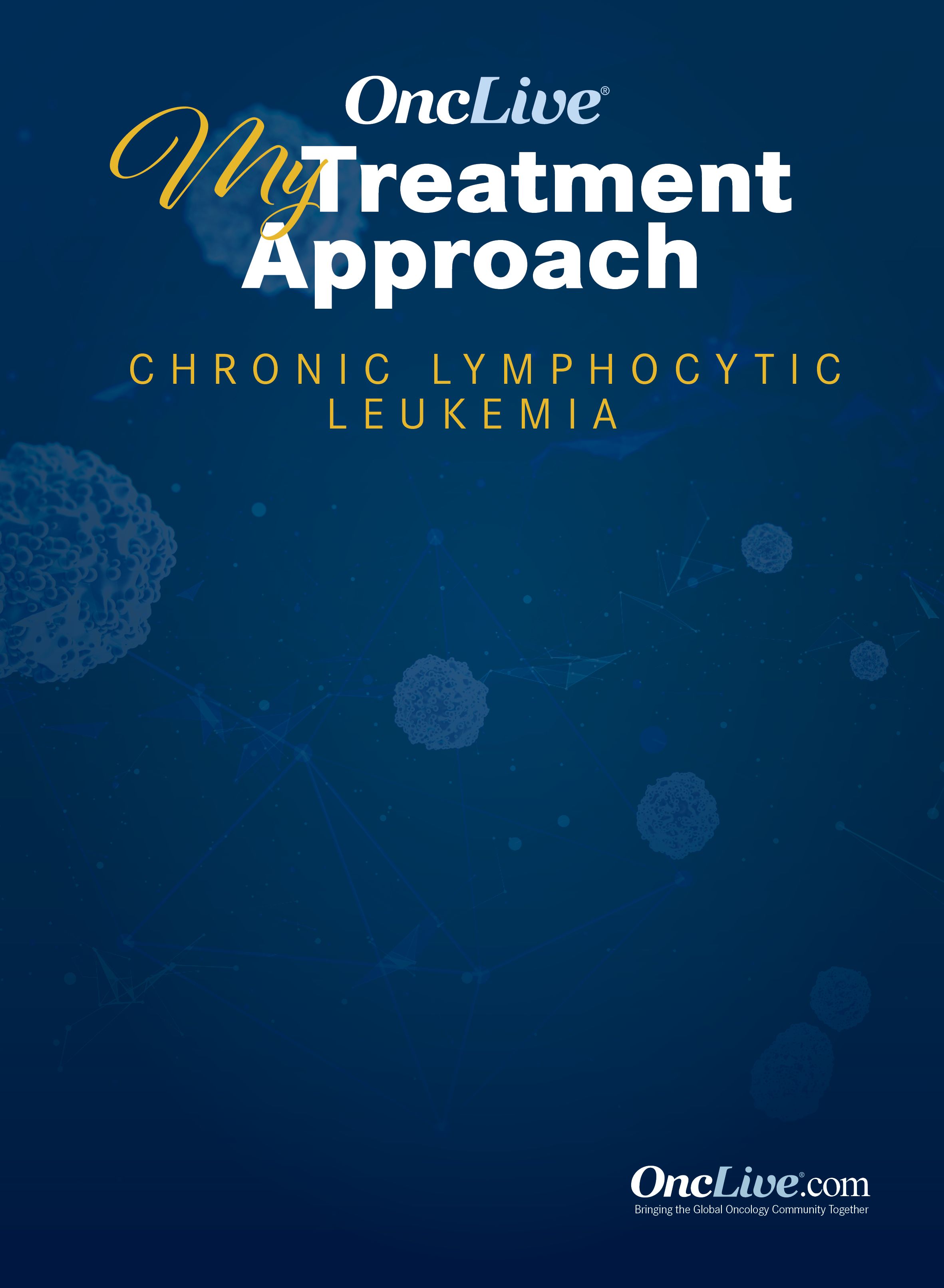Publication
Article
Supplements and Featured Publications
An Expert Provides Insight Into the Use of BTK Inhibitors in CLL
Author(s):
Parameswaran Venugopal, MD, discussed the toxicity profiles of BTK inhibitors regarding treatment selection in CLL.
Parameswaran Venugopal, MD

The majority of patients with chronic lymphocytic leukemia (CLL) should receive a BTK inhibitor in the frontline setting, explained Parameswaran Venugopal, MD, who added that when it comes to patient selection, it’s important to remember that acalabrutinib (Calquence) has shown a favorable cardiac toxicity profile compared with ibrutinib (Imbruvica), whereas the latter has longer-term follow-up data.
“Ibrutinib has done extremely well over the years, and the long-term data are very impressive and very striking. Acalabrutinib is, at least based on independent studies, equally effective as ibrutinib, but with a much lower adverse effect [AE] profile. We do need a head-to-head study comparing the 2 drugs, so that we can finally say which one, if either, is better or whether they’re noninferior,” said Venugopal.
In an interview with OncLive®, Venugopal, a professor in the Department of Internal Medicine at Rush Medical College, The Elodia Kehm Chair of Hematology, and director of the Section of Hematology at Rush University Medical Center, discussed the toxicity profiles of BTK inhibitors regarding treatment selection in CLL.
OncLive®: For which patients does it make sense to offer chemoimmunotherapy to instead of a BTK inhibitor?
Venugopal: Chemoimmunotherapy was the mainstay of treatment for decades in CLL, but in the past several years, because of the emergence of new agents—particularly the BTK and BCL2 inhibitors—and studies showing significant benefit of these agents, not only efficacy but also toxicity and AEs, the role of chemoimmunotherapy has been [reduced] significantly.
In today’s clinic, if I see a patient with CLL who needs treatment outside of a clinical trial, it’s going to mostly be a novel agent. A [rarer] situation where I might offer chemoimmunotherapy like FCR would be a patient who is young and fit, who has CLL that needs treatment and has no adverse prognostic factors in terms of chromosomes, cytogenetic abnormalities, and has an IGHV mutation. That’s the only group I would offer [chemoimmunotherapy to] at this time for frontline treatment.
Is FCR the preferred chemoimmunotherapy regimen for eligible patients?
My opinion is based on my interactions with my colleagues, my referring doctors, and my peers. There are areas where nobody has a consensus in terms of which is the best use of a frontline regimen, mainly because we don’t have randomized studies showing that one combination is better than the other in CLL at this time, although there are studies going on [to that end].
What are your thoughts on the data that support the use of frontline acalabrutinib in CLL?
We have studies showing the efficacy of acalabrutinib in the up-front setting. That agent has been compared with many other agents and standards of care, whether it be a monoclonal antibody or standard chlorambucil, and shown to be efficacious. The efficacy is far superior [with acalabrutinib], and the AEs are much better compared with chemoimmunotherapy or prior standards of care.
We don’t have a randomized phase 3 prospective study comparing different BTK inhibitors. With the available information we have, even though they are from separate studies, it appears that the newer BTK inhibitors like acalabrutinib and zanubrutinib [Brukinsa] may have similar efficacy, but less toxicity compared with ibrutinib, which was the first BTK inhibitor approved [in CLL].
In what situations would you favor acalabrutinib over ibrutinib?
If there is a choice between acalabrutinib and ibrutinib in the frontline setting, many times acalabrutinib is the one we would choose primarily because of the reduced toxicity. The cardiac toxicity is always a concern with ibrutinib. On the other hand, one has to remember that ibrutinib has a much longer track record than acalabrutinib.
Some of us are more comfortable when we have longer-term data. Ibrutinib has the longest [follow-up] data in CLL compared with any other BTK inhibitor. That factor has to be taken into account when you choose one or the other. These are study-to-study comparisons and not head-to-head comparisons.
With zanubrutinib, we don’t have a head-to-head study. The only published study I know is the ASPEN study, which compared zanubrutinib with ibrutinib. That was in the setting of Waldenström’s macroglobulinemia not CLL, where clearly the efficacy was similar, but the AEs were significantly better with zanubrutinib compared with ibrutinib.
If zanubrutinib were approved, what other factors would you consider with regard to treatment selection among the BTK inhibitors?
Some of the patient factors might also help. If the patient has comorbidities, cardiac illness, cardiac failure, or compromised cardiac function, I might be hesitant to use a drug which has a higher potential for bringing another cardiac event on, like atrial fibrillation.
The other issue is that some patients already have atrial fibrillation; they are on anticoagulation, and they cannot be off blood thinners. In that case, ibrutinib can be a problem. However, BTK inhibitors in general have a bleeding tendency. Certainly, the data are more [concerning in that regard] with ibrutinib.
Hypertension is also something to be looked at. With ibrutinib, as time goes on, you can have increasing incidence of hypertension, whereas the graph with acalabrutinib is kind of stable after the initial rise.
Some patients may like one-a-day administration compared with twice-a-day administration, so that is something to consider too. There are many factors related to the patient’s status and clinical history, which also could determine which agent is better than the other for a particular patient.
How do you manage the AEs associated with BTK inhibitors?
Atrial fibrillation is not a contraindication based on the FDA label for a BTK inhibitor. Atrial fibrillation can be managed, even if the patient develops it while on the drug. I’ve had patients who had atrial fibrillation, who went on to receive a BTK inhibitor and did very well over the years. I’ve had patients who did not have any atrial fibrillation but developed it during therapy with ibrutinib, which I continued without any problems.
Most of the time, it depends on how serious the atrial fibrillation is. Is the cardiologist insisting on anticoagulation for the patient? Or, is it something that can be taken away? In terms of management, if the patient develops atrial fibrillation because of a BTK inhibitor and I don’t want to stop the BTK inhibitor, then I usually involve one of my cardio-oncology colleagues.
Other AEs, for example, like bleeding and anticoagulation therapy, I try to avoid use in patients with anticoagulation, especially with the novel agents, if that is the best option. I continue that [agent] or I start a BTK inhibitor, even in patients with therapeutic anticoagulation. Though, I may have to monitor them very closely, much more closely than patients who are not on anticoagulation. Anticoagulation is not a contraindication based on the FDA label. You have to use your judgment when you use it in such a patient.
Other AEs can be gastrointestinal in nature, which are very easy to manage. Patients with hypertension are typically closely monitored.
Infections have been thought to be an AE of BTK inhibitors and long-term use. The important thing to make sure we monitor for is infectious issues. If patients develop a fever, we should be cognizant of the fact that they can have fungal infections.
The AEs from BTK inhibitors, in my opinion, are all manageable. It mainly will depend on patients and physicians who are aware of the AEs and will be proactively engaged in monitoring them, bringing them to attention, and taking care of them as soon as the AE is observed. Most of the time, patients don’t end up discontinuing the medication.
What barriers might be preventing community physicians from prescribing acalabrutinib vs ibrutinib?
I’m not sure, because, based on my interactions with the peers, as well as community physicians who refer patients to me, acalabrutinib is something I have seen being used more and more. In the community, people who have used ibrutinib before [may feel more comfortable using that agent than acalabrutinib]. Ibrutinib came to the market in 2012 or 2013. Therefore, if an oncologist in the community has used the drug in 3 or 4 patients and did very well compared with chemoimmunotherapy—which he or she used before—when a new form comes, they will be a little uncomfortable switching unless they have had a personal experience, a problem with the previous agent, or a personal experience treating a patient with the new agent and seen the difference compared with the previous agent. It’s really a matter of conveying the information to the community and making sure they have the right information.
What strategies do you recommend to ensure adherence to BTK inhibitors?
Oral regimens always come with this problem: the noncompliance and adherence. Even in patients who are compliant, adherence could be a problem, particularly when you have to take the drug along with many other drugs, and especially when you’re doing so well. If you’re doing so well, you may forget to take an oral medication, unlike going into the clinic and getting an intravenous infusion once a month.
At least in the beginning, I see most of these patients every 4 weeks, and me or my advanced practice provider remind them of the importance of taking the medication regularly, and we do remind them about the control of the disease and how much it depends on compliance. Ideally, we should be able to check the drug level, but we don’t have a commercial test that can routinely check a BTK level, so I can tell the patient that I know that they’re not taking the drug for the past week. Therefore, I have to depend on what the patient says and how much I can convince them about the need to take it.






























